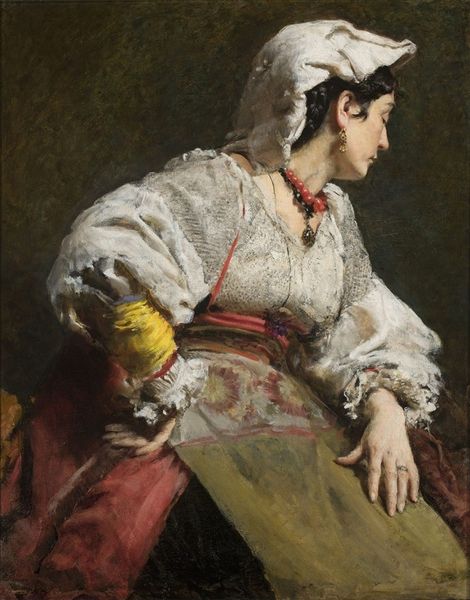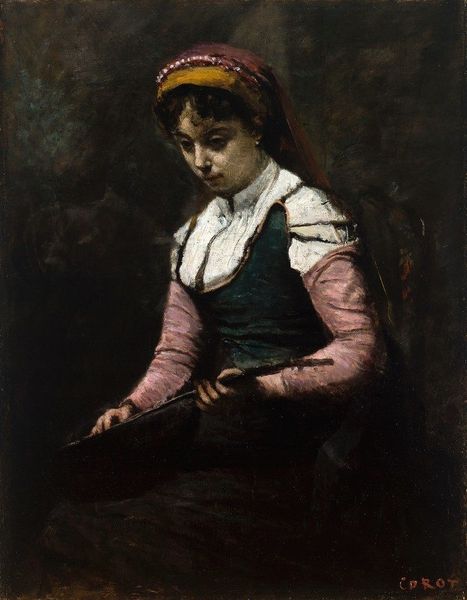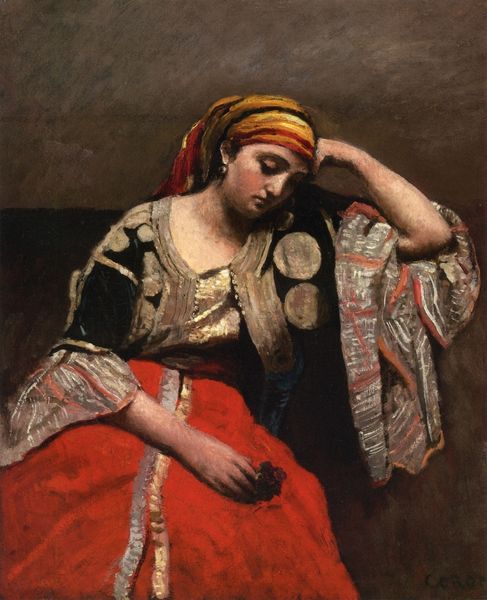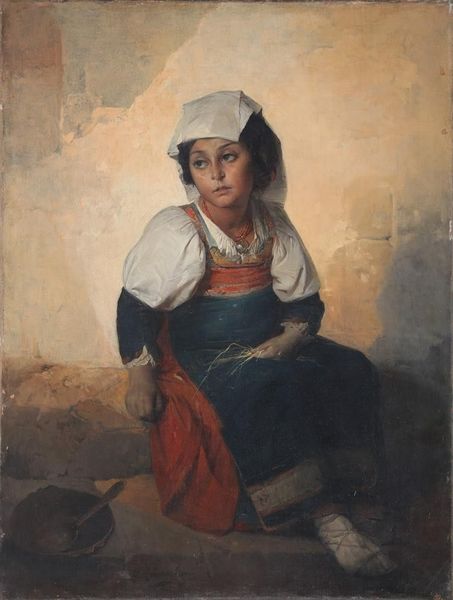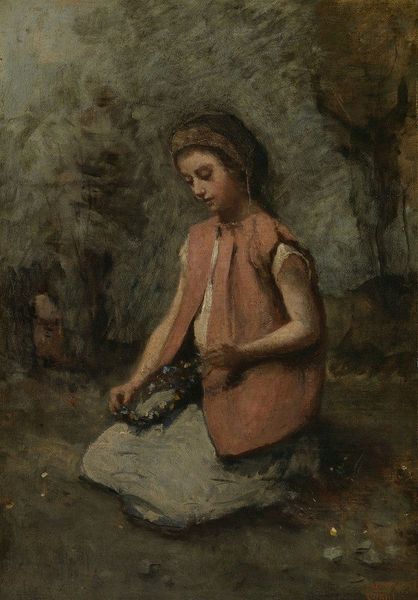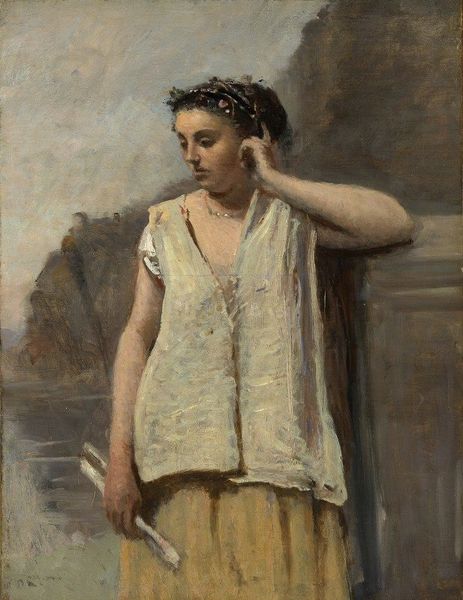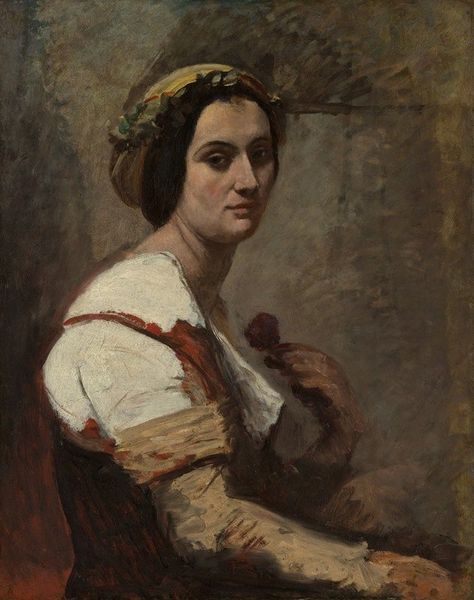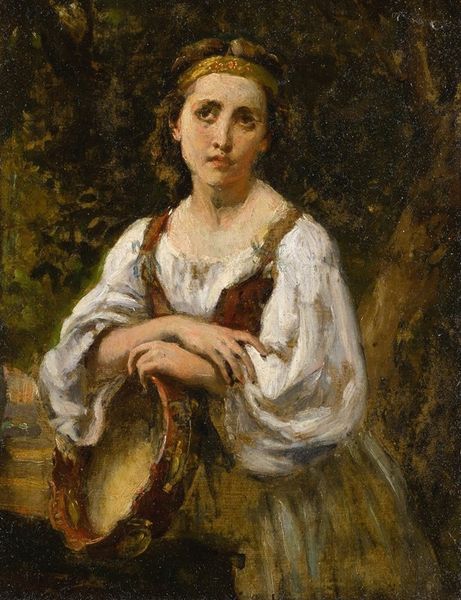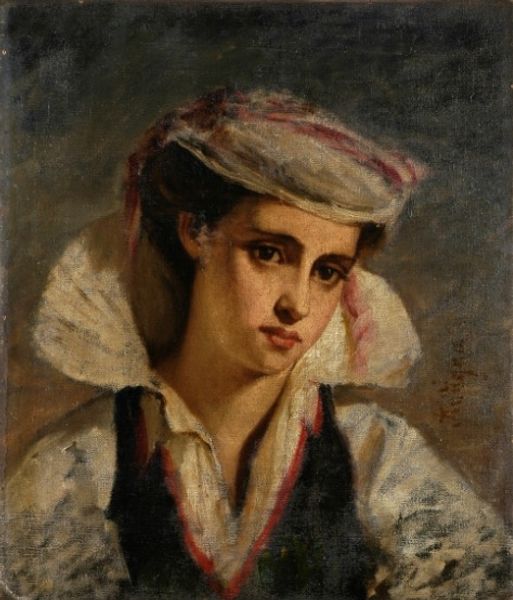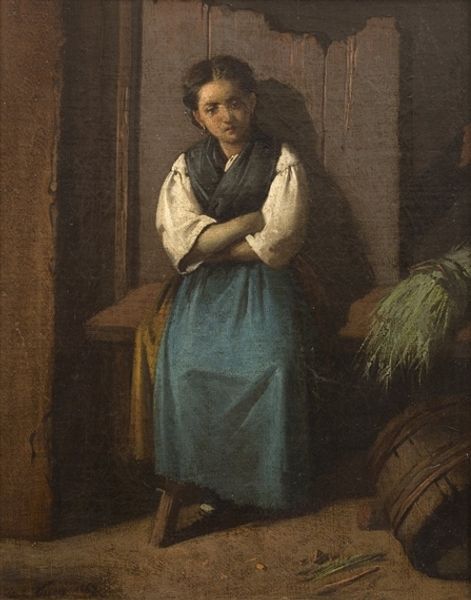
Copyright: Public Domain: Artvee
Camille Corot's "Reverie" presents us with a figure study, dominated by muted tones and a subdued atmosphere. The painting’s structure relies on a pyramidal composition, grounding the seated woman within a landscape that feels both present and abstracted. Corot's brushwork is loose, particularly in the background, suggesting a landscape more felt than seen. Look at how the texture of the paint itself contributes to the dreamlike quality, softening the boundaries between figure and setting. The woman’s costume, though rendered with some detail, blends into the overall chromatic harmony, a mix of earthy browns, creams, and touches of muted red. The book she holds becomes a signifier of inner life, a contrast between the external world and the realm of thought. This tension is key, highlighting the Romantic interest in the individual’s subjective experience. Ultimately, the painting invites us to contemplate the interplay between form and content, where the visible elements—color, line, texture—serve as conduits to the intangible experience of reverie. It's a study in how art can capture a moment of quiet contemplation, using formal means to evoke a profound emotional and intellectual response.
Comments
No comments
Be the first to comment and join the conversation on the ultimate creative platform.

